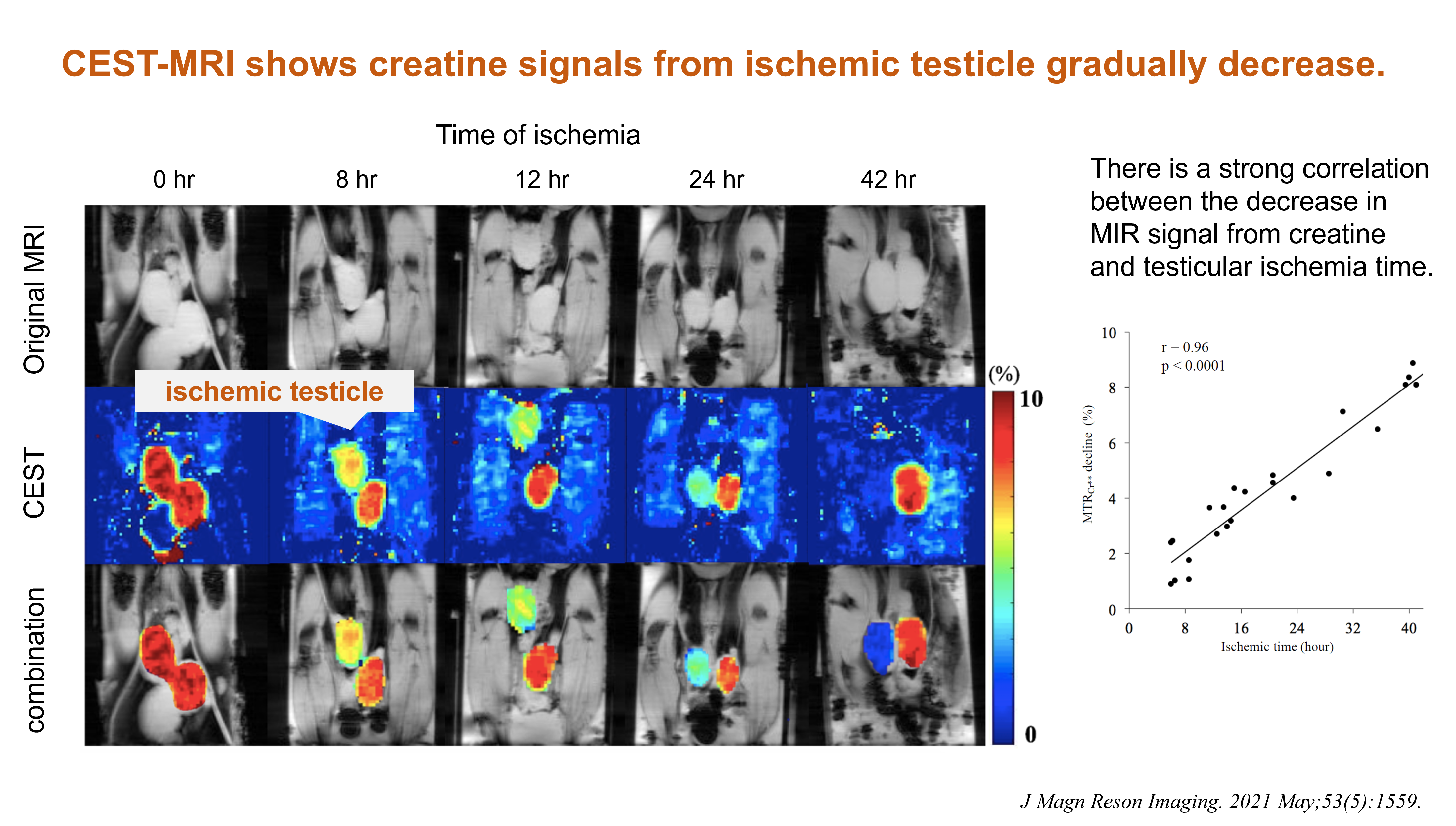Advantages
- MRI technology to measure the sperm-producing capacity of the testes of male infertility patients.
- This technology could improve the quality of life of patients by providing reference information for diagnosis and treatment strategies for male infertility.
- It is also expected to improve the collection rate of microdissection testicular sperm extraction (Micro TESE).
Background & Technology
The primary causes of male infertility encompass hypospermia (reduced semen volume), oligozoospermia (low sperm count), and azoospermia (complete absence of sperm in the semen). These indications are primarily due to testicular dysfunction, and it is crucial to comprehend the status of testicular function in order to accurately distinguish the cause and opt for a treatment accordingly. A few of these therapies necessitate surgical intervention, although the response rate is not always optimal, thus it is also indispensable to predict the response to treatment.
Professor Hidetaka Kioka of the Graduate School of Medicine at The University of Osaka, along with Dr. Shinichiro Fukuhara, a specialist in urology, have developed a technique using special MRI technology to measure the presence and distribution of sperm-producing ability within the testicles. This technique utilizes chemical exchange saturation transfer magnetic resonance imaging (CEST-MRI) to measure the distribution of “creatine” (an organic acid known as a source of energy for muscles) in the testicles and evaluates the distribution of sperm production ability based on the results. It has been confirmed through the assessment of model mice with testicular retention (cryptorchidism) or testicular ischemia induced by mimicking testicular torsion that dysfunction of the testes can be detected based on the concentration of creatine (see figure). Additionally, a verification study using mice that were irradiated with radiation on some parts of their testes showed differences in creatine concentration between the irradiated and non-irradiated areas. This information is considered important for preliminary investigation to explore the areas where sperm can be obtained during testicular sperm extraction (Micro TESE), which is one of the treatments for male infertility, and is expected to improve the sperm retrieval rate. Furthermore, it is expected that it will be possible to evaluate the stages at which spermatogenic abnormalities occur by using genetically modified mouse models that induce spermatogenic abnormalities at various stages for imaging analysis. Currently, with the cooperation of male infertility patients, further clinical research is being conducted.
 |
Researcher
Hidetaka Kioka and Shinichiro Fukuhara, Graduate School of Medicine Division of Medicine, The University of Osaka
Expectation
The University of Osaka is currently seeking collaborations with companies interested in utilizing this technology to establish diagnostic and therapeutic methods for male infertility. Through joint research and development with The University of Osaka, your company’s new products and services, such as MRI products, MRI image processing products, and innovative medical examination devices, could be developed. We firmly believe that this technology can also be useful for the non-invasive development and performance evaluation of drugs and therapies for male infertility. We would be grateful if you would consider research grants, including national projects and private grants, as a means of utilizing our technology.
Patent & Publication
This technology has been filed for PCT application and has already been published in WO2022/118906.
Project No: DA-03136


